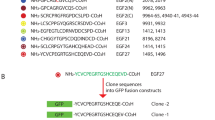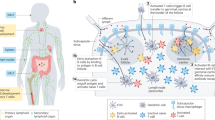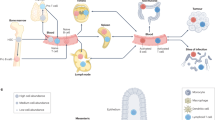Abstract
THE organization and control of growth of the normal tissues of the body has been related by Green1 to the presence on the surface of normal cells of specific reactive sites, which are thought to be lipoproteins2. These he called tissue specific antigens, and these antigens were postulated to undergo a modification when cells become displaced outside their normal environment3, and thereby alert the disposal mechanisms of the body which prevent the growth of ectopically placed autologous tissues. An attempt has therefore been made to design a system to demonstrate an immune response to ectopically placed autologous tissues.
This is a preview of subscription content, access via your institution
Access options
Subscribe to this journal
Receive 51 print issues and online access
$199.00 per year
only $3.90 per issue
Buy this article
- Purchase on Springer Link
- Instant access to full article PDF
Prices may be subject to local taxes which are calculated during checkout
Similar content being viewed by others
References
Green, H. N., Brit. Med. J., ii, 1378 (1954).
Vogt, P., Nature, 182, 1807 (1958).
Anderson, M. R., and Green, H. N., Nature, 198, 859 (1963).
Branster, M. V., and Morton, R. K., Nature, 180, 1283 (1957).
Author information
Authors and Affiliations
Rights and permissions
About this article
Cite this article
ANDERSON, M. An Attempt to demonstrate in vivo Recognition of Ectopically Placed Autologous Tissues. Nature 199, 712–713 (1963). https://doi.org/10.1038/199712a0
Issue Date:
DOI: https://doi.org/10.1038/199712a0
This article is cited by
Comments
By submitting a comment you agree to abide by our Terms and Community Guidelines. If you find something abusive or that does not comply with our terms or guidelines please flag it as inappropriate.



